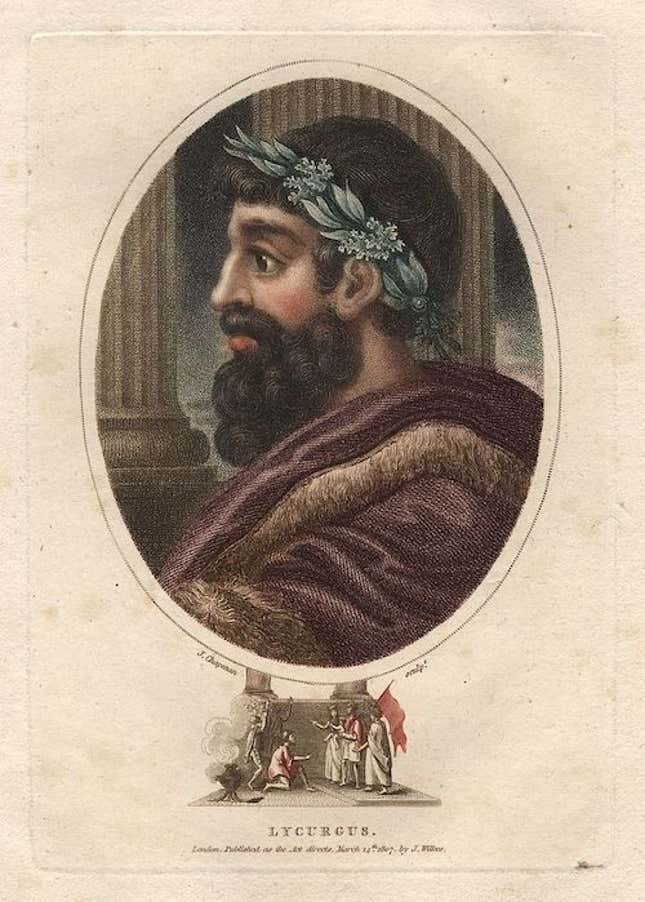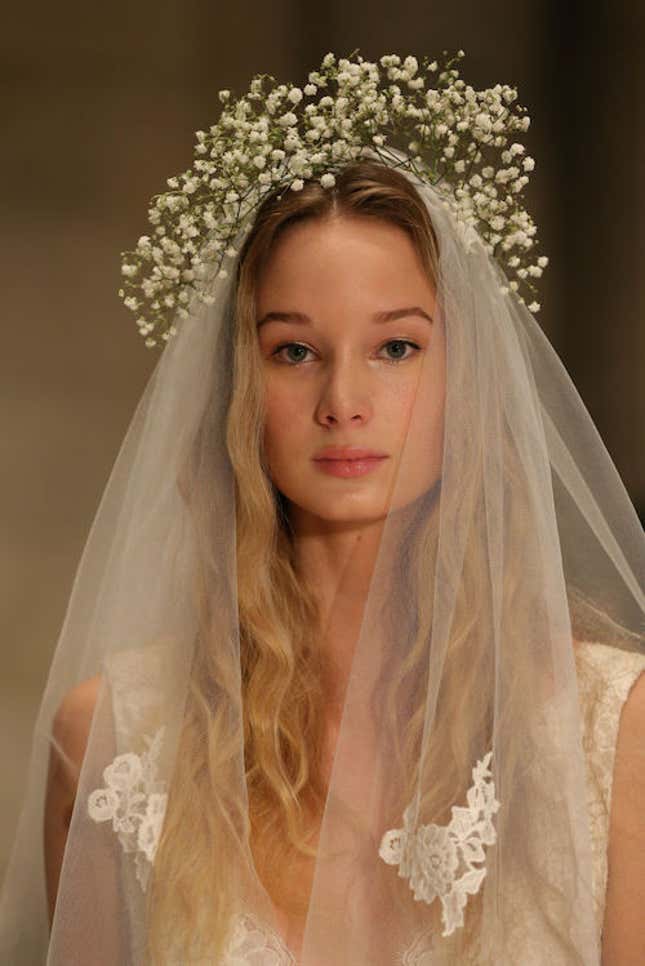
Image: Elena Scotti/GO Media
The story begins as too many stories starring women do: Daphne didn’t want to have sex. She was a nymph, a minor goddess of sorts, daughter of a river god, and beautiful to boot. According to Ovid, her father wanted grandchildren, but Daphne wanted to stay free, her body untouched by lust, forever her own. “Dearest father, let me be a virgin forever,” she begged. He relented, but omniscient narrator Ovid cautioned, “Your beauty itself Daphne, prevents your wish, and your loveliness opposes your prayer.”
She was, according to this ancient logic, too attractive to have agency. From here, the story blends into a chase scene. The sun-god, Phoebus Apollo, sees Daphne and wants her. “Like a hound of Gaul starting a hare in an empty field,” he ran after her, as intent on his rape as she was on her freedom. At the last minute, her father lends her aid and turns the nymph into a laurel tree. (Though he doesn’t truly fulfill her wishes. She asked for him to “destroy this beauty” and he couldn’t, or wouldn’t, give her that.) Ovid is on Apollo’s side. Apollo “loved her” still, and continued to claim her. “Since you cannot be my bride, you must be my tree!” He took her branches and made them into crowns for his generals. He wreathed his hair with her leaves. He took apart her new, deciduous body, and used it as he wanted. Of course he did; he was a god.
As far back as ancient Greece, heads have been decked in leaves and wreaths, blossoms and buds. The practice was never reserved just for the gods, but it was practiced primarily by two groups: the triumphant and the faithful. And when I say faithful, I mean those who were faithful to systems of power. Those who worshipped properly, who were willing to give up their bodies to prop up military might or tyrannical rule. It might seem as though this has changed. But flower crowns, seemingly innocuous, seemingly innocent, still tell strange stories about power and beauty, who has it, who doesn’t.

For the Greeks, crowns of leaves and flowers were used as trophies, honorary rewards given to “victors in athletic, military, poetic, and musical contests,” writes Emilie Carruthers. Since the contestants were male, the winners were male. The Romans followed suit, but they added another use for green headpieces. They were an early hangover cure for upper-class men. During their Bacchus-inspired quasi-intellectual wine-soaked orgies, they tied tight pieces of wool around their heads to keep them together, I guess. They decorated their stylish wool headbands with roses, violets, myrtle, and parsley. It probably didn’t work that well, but it looked cool in party pottery.
As Christianity rolled into town, flower crowns fell by the wayside—at least, for a while. It wasn’t cool to wear pagan symbols during the Middle Ages, and perishable headpieces had a certain Dionysian vibe that didn’t go well with the rule of the day. During the plague, people filled their pockets with flowers in hopes of keeping away death, as well as masking the smell of rotting corpses piled everywhere, but they didn’t wear them. They were too busy digging graves, I imagine. Flower crowns appeared less frequently in art, though occasionally religious figures (both men and women) were shown wearing them. It is, after all, a very solid look.
-

-

-

-

-

-

-

-

-

-

-

-

-

-

-

-

-

-

-

-

-

-

-

-

-

-

-

-

-

-

-

-

-

-

-

-

-

-

-

-












































